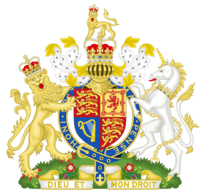William Steffens
Sir William Steffens GCE KNE, DSO | |
|---|---|
| Nickname(s) | "War Horse" |
| Born | March 1, 1902 |
| Died | August 14, 1991 (aged 89) Christiania, Niagara |
| Buried | St. George's Military Cemetary, Victoria |
| Allegiance | |
| Service/ | Niagaran Army |
| Years of service | 1917 - 1970, 1976 - 1982 (66 years) |
| Rank | Field Marshal |
| Service number | 270865 |
| Unit | Christiania Highlanders |
| Commands held |
|
Field Marshal William Steffens was an officer in the Niagaran Army, known as one of TBD individuals who fought in all three Great Wars.
Steffens was the oldest son of XXX, XXX. His father was a coal miner who joined the Army when the First Great War began, and was killed in TBDBATTLE in 1915. Steffens enlisted in the Army at age 15 in 1917, lying about his age to enter basic training. he was assigned to the Christiania Highlanders Regiment, which he would serve in until 1940. He fought in several major battles, being injured in the leg in the TBDBATTLE, which legt him with a slight limp for the rest of his life. At the end of the war his age was revealed, but his commanding officer, James Cassels, intervened on his behalf and was not punished. He chose to stay in the army after the war, becoming an officer in 1923, and by 1936 was commander of the 2nd Battalion, Christiania Highlanders. By 1940 he had been promoted to Brigadier and led the 149th Infantry Brigade until 1943, when he was promoted to Major General in charge of the 17th Infantry Division. In 1944 he was shuffled to the 34th (Highland) Infantry Division, ironically the unit his father had served in when he was killed. After the war he was promoted to Lieutenant General and commanded the XIV Corps. He then oversaw the Fifteenth Field Army, which was stationed in TBDLOCATION. He was transferred to the Eleventh Field Army in 1955, which he would command as part of the Melayu Emergency, which would be his last overseas deployment.
After a successful campaign fighting in Melayu, he made plans for retirement, but stayed in uniform after he was offered command of the 4th Army Group, responsible for home defence, in 1957. In 1962 he was promoted to Field Marshal and appointed Chief of the Imperial General Staff, commander of the Niagaran Army. He served in this post until 1968, and led a major reorganization of the Army, under the defence policy of TBDDEFENCESECRETARY. This included a major demobilization, decreasing servicemen from 1.3 million in 1962 to only 800,000 by 1968. He finally retired in 1968 once he reached the then-retirement age of 66.
However, he wasn't done with service yet, and at age was called up to serve as commander of the Niagaran Theatre Command, the primary home defence force of Niagara in the Third Great War. Despite being well into his seventies, he was one of the most capable military officers avaible, but was deemed to old for active combat operations. In 1982 he suffered a stroke and voluntarily resigned his post due to complications during recovery. He never fully recovered, and died in 1991 with full military honours. He is buried in the St. George's Military Cemetary in Victoria.
